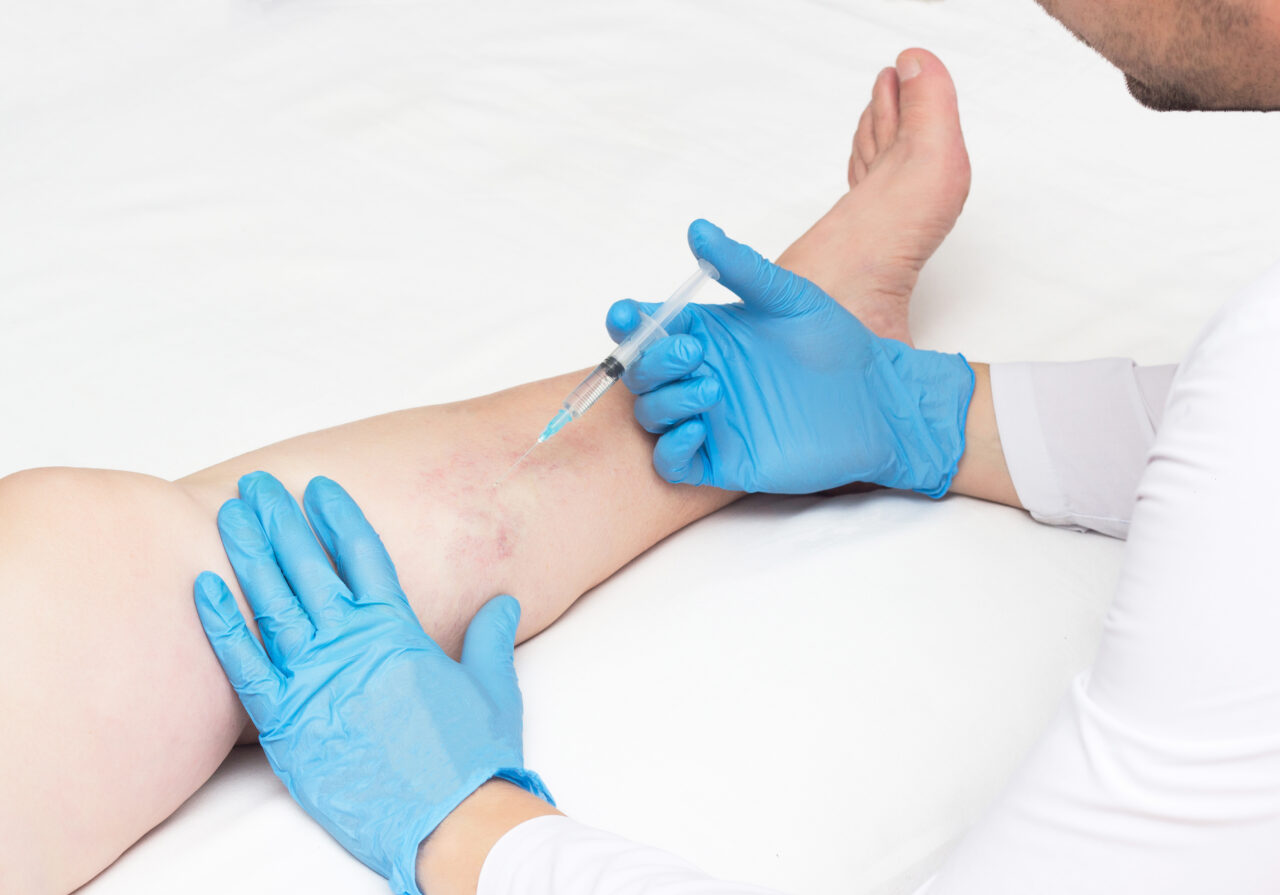What is endovenous (vein) ablation?
Endovenous (vein ablation) is a minimally invasive procedure for patients with chronic venous insufficiency, the root cause of most vein problems. Venous insufficiency is a medical condition wherein the collapse of vein valves leads to the accumulation of blood in leg veins, eventually leading to spider veins and bulging varicose veins. During a vein ablation, the vein doctor channels thermal or laser energy into the diseased vein to destroy it, rerouting the accumulated blood into healthier leg veins. Vein ablation restores optimal blood circulation to the heart and addresses the root cause of varicose veins and spider veins.

What are the two types of vein ablation?
Endovenous Laser Ablation
Endovenous laser ablation pioneered minimally invasive vein treatments, having first been introduced in 2003. During endovenous laser ablation, the vein doctor channels laser energy into the diseased vein via a small laser fiber. The laser energy destroys the diseased vein and reroutes the accumulated blood into healthier veins. Endovenous laser ablation has a nearly perfect success rate, but it may cause mild post-treatment discomfort.

Endovenous Radiofrequency Ablation
Endovenous radiofrequency ablation is similar to laser ablation, but it involves using thermal energy instead of laser energy. The vein doctor channels radiofrequency waves into the diseased saphenous vein via a catheter. The radiofrequency waves eventually turn into thermal energy and collapse the diseased vein shut, rerouting the accumulated blood into healthier leg veins. This procedure has a nearly perfect success rate, and it’s a little more comfortable than laser ablation.
How does vein ablation treat chronic venous insufficiency?
To understand how vein ablation treats chronic venous insufficiency, you must understand how this circulatory disorder happens. Venous insufficiency is a medical condition wherein your vein valves collapse. In healthier veins, the valves act as one-way doors that ensure smooth blood circulation to the heart against the force of gravity. When your vein valves collapse, blood flows backward and accumulates in the leg veins because of gravity, leading to dilated veins and the eventual formation of spider veins and varicose veins.
Chronic venous insufficiency can’t be “cured,” i.e., there’s no way to fix the damaged vein valves. However, a vein ablation procedure can collapse and remove the diseased saphenous vein responsible for your vein problems. The vein doctor uses laser energy or thermal energy to collapse the diseased vein, turning it into a hardened tissue eventually absorbed by the body. The accumulated blood reroutes into healthier leg veins, restoring optimal blood circulation to the heart. As such, vein ablation treats chronic venous insufficiency and improves blood flow.
What happens before and after varicose vein treatment?
Before Vein Ablation
- Inform your vein doctor about all of your ongoing medications and supplements.
- Inform your vein doctor of all your existing allergies.
- You may have to stop taking certain blood thinning medications and non-steroidal anti-inflammatory medications (NSAIDs), such as aspirin.
- You should wear look-fitting clothes for your vein ablation session.
- Remove all the clothing and jewelry from the targeted area during the treatment.
- Arrange to have someone drive you back home after the vein treatment.
During Vein Ablation
Vein ablation is performed as a simple in-office procedure. The vein doctor will administer local anesthesia to numb your skin’s surface, ensuring comfort. The vein doctor makes a small incision on the targeted area on your legs, through which they insert a catheter under ultrasound guidance. The catheter is carefully positioned into the diseased saphenous vein responsible for your vein problems. Once the catheter is lodged in place, the vein doctor delivers tumescent anesthesia to numb the surrounding tissues. Finally, the catheter is activated to generate radiofrequency waves or laser energy, which destroys the diseased saphenous vein.
After Vein Ablation
Endovenous ablation is a minimally invasive and outpatient procedure. You can resume most of your daily activities and work immediately after your vein treatment. You may experience mild post-treatment redness, swelling, discomfort, soreness, irritation, and bruising around the treatment site for a few days, but these side effects are tolerable. Your vein doctor may also offer pain medications to alleviate discomfort. You can resume most of your daily activities immediately, but please avoid strenuous physical workouts, heavy lifting, saunas, and swimming for a few days. The vein doctor will provide an overview of your aftercare guidelines.
How to reduce swelling after vein ablation?
Swelling is a common side effect of endovenous ablation. You can reduce post-treatment swelling by applying ice packs to the treatment areas for 10 to 20 minutes every 2 to 3 hours. You should also elevate your legs while sitting down to ensure smooth blood circulation to the heart and walk frequently.
What are the possible radiofrequency ablation complications?
Radiofrequency ablation is an extremely safe procedure with a negligible risk of complications. Most people only experience mild post-treatment redness, swelling, discomfort, and bruising around the treatment sites. However, all treatments that involve making incisions carry a small risk of infections and deep vein thrombosis, but we take all possible measures to avoid radiofrequency ablation complications.
How long does vein ablation take?
The entire vein ablation procedure concludes within 30 to 60 minutes, following which you can resume your daily activities and work. As such, vein ablation is the perfect lunchtime procedure.
Schedule your varicose vein treatment today
Vein Treatment Clinic is one of the most reliable groups of spider vein and varicose vein treatment centers in the country, with offices in New York, New Jersey, California, and Washington DC. We only provide the safest minimally invasive vein treatments, such as vein ablation, for your vein problems. If you have spider veins, varicose veins, or other symptoms of vein disease, please schedule your varicose vein treatment today.








